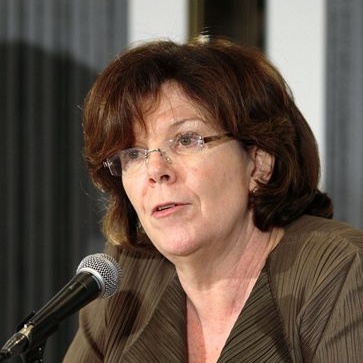By: Sheila A. Smith

As a college student, I spent more than a year at Sophia University’s Comparative Cultures Department, studying intensive Japanese language and taking courses in Japanese culture. My language learning began at Sophia, starting from scratch as a child would to master this opaque and easily deconstructed language. I loved the kanji, the ideographs that told their own story, and I found the sound of Japanese soothing… Unlike English, it seemed absent of edges and elbows, until of course I ran into the abruptness of masculine form and delivery.
Sophia was a wondrous place, full of classes on Zen Buddhism, Japanese literature, Meiji history, the archaeology of the Jomon and Yayoi era and classic Kanbun. My intensive Japanese language class attracted a broad range of students from Europe, Asia, and the United States. Our teachers had developed their own methods, having taught the priests and nuns of the Jesuits in Japan for decades, and I remember their strict emphasis on ridding us of our foreign accents. Hours were spent in the labs with NHK tapes, designed to teach hyōjungo to TV announcers. Once released from class, we would burst forth into Tokyo, a mass of foreigners in all shapes and sizes, speaking to each other (loudly no doubt) on the trains in our heavily American, Italian, Swiss, and German accented Japanese!
But my knowledge of Japan benefited enormously from the extra tutelage of the Kuruba family. I lived with them in their home on the grounds of Hakusenji Temple in Sugamo, sharing a room with Michiko whom I had met in the United States. I slept on a futon, ate breakfast in the morning in the cramped kitchen with o-tōsan, a Japanese salariman, and came home at night to the rhythm of Japanese family life—bath, dinner, and conversation about everyone’s day. On the weekends, Keiko, Michiko’s older sister, would come by with her husband, pregnant with their first child. Yōzō was born not long after I arrived, and I got to be part of the excitement of welcoming the first Kuruba grandchild. Little did I know then that I would be part of his life, and the other five grandchildren born in the ensuingyears, for decades thereafter.
The days were structured by my commute between modern Tokyo and shitamachi. I commuted to Ichigaya by the quaint 19th century Tōden, a small streetcar that still operated in the northern part of Tokyo. I can still hear the clang of the Toden bell, and being swayed back and forth as it took its turns around the tight corners of track that hugged shitamachi. At Higashi Ikebukuro, I transferred to the Yurakuchō Line, and entered the 20th century. After hours of Japanese language learning with my cosmopolitan classmates, I would journey back to Hakusenji’s quiet each afternoon. My Japanese mother would be waiting, with o-cha and dorayaki or some other Japanese sweet, ready to help me with my kanji and the Kōjien. Then, we would go out to the market where Hiroko would teach me the names of vegetables and fish, and we would chat with all of the shōtengai merchants. Needless to say, I ended my days exhausted, only to be awakened the next morning by the sound of the temples priest reading his prayers punctuated by long notes of the kane bells.

My study abroad experience led to a research career working on Japan. Sophia was an amazing place, and the centuries old Jesuit pursuit of scholarship in Asia still discernible in the approach to cultural studies. I went on to pursue a PhD at Columbia University in New York with an East Asian Studies faculty in the humanities and social sciences. Later, I returned to Japan many times—to the University of Tokyo for research for my doctoral dissertation and then again several times as a visiting scholar at Japanese universities, including the University of the Ryukyus and Keio University. Today, I visit Japan two or more times a year as I continue my research and writing on Japan as a policy analyst at the Council on Foreign Relations. I’ve changed my focus from language and culture to politics and foreign policy, but I still make the journey to my Japanese home in Sugamo. I now have four generations of Kurubas to help me understand the topics of the moment, and still, I have Hiroko to help me with my vocabulary. Only now, at the age of eighty-eight, she uses an electronic dictionary.
My ability to live, work and study in Japan was built upon the foundation of those early years of Sophia and Sugamo. My friendships with the Kurubas and others in Japan have lasted a lifetime, and continue to anchor and enrich my life. I was a different person by the end of my study abroad in Japan, made more patient and I hope more tolerant by those early discoveries. I met many others who came to learn about Japanese culture and society, and continue to listen to the Japanese conversation about who their nation, its past and their aspirations for its future. Perhaps equally important, I learned so much about who I was in my study abroad, and cannot wait for my son to have the chance for that amazing journey, crossing cultural boundaries, navigating differences, and finding himself in the process.